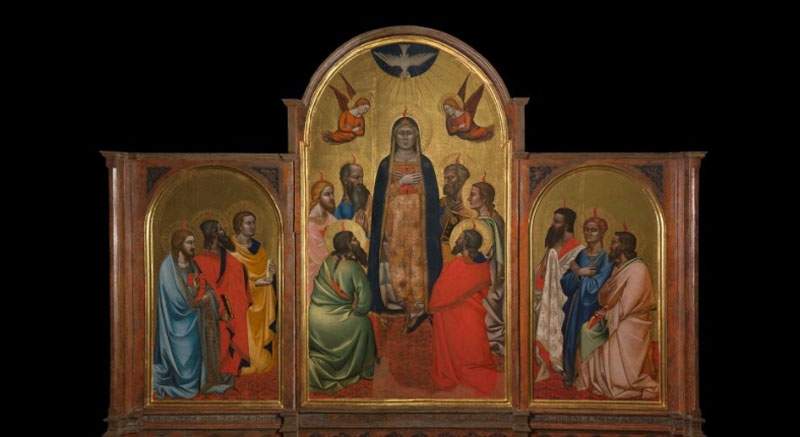The Galleria dell’Accademia in Florence has begun the digitization of a selection of more than fifty works housed in the museum, including Giambologna ’s Rape of the Sabine Women and many paintings by Lorenzo Monaco, Pietro Perugino, Filippino Lippi, Sandro Botticelli, Pontormo, Bronzino, Allori and others.
It is an initiative that aims to fulfill a twofold purpose: to monitor the state of conservation of the works and to allow the community to access the masterpieces in a new way, through the Gallery’s website, with ultra-high-definition images and innovative tools for distance learning and virtual visitation activities.
“The project began in an experimental phase in August 2019 with the acquisition of Andrea Orcagna’s altarpiece, which was under restoration at the time,” said Cecilie Hollberg, director of the Florence Academy Gallery “and is now proceeding in the museum’s halls with the filming of more than fifty of the major masterpieces in the collection, ranging from the great altarpieces, from Perugino to Bronzino to Allori, to precious gold backgrounds, to a selection of musical instruments, not forgetting, of course, the plaster sculptures, and not least the clay model of Giambologna’s Rape of the Sabine Women. On the museum’s digital channels, in the coming weeks, it will be possible to follow the progress of the acquisition work, and at the end of the project, in the near future, it will be possible to access from the Gallery’s website a special section dedicated to the ’up-close’ viewing of the great masterpieces physically present in our museum.”
“The campaign will offer scholars and restorers an important tool for assessing and mapping the state of conservation of the works,” added Eleonora Pucci, the museum’s restoration officer. “It is truly amazing the possibility offered by technology to explore, digitally, entire surfaces by detecting the smallest details, brushstroke marks, traces of drawing, but also cracks or the presence of small gaps.”
A careful program of close inspection of paintings and sculptures and, if necessary, dusting the works has enabled the start-up phase of the project. Photographic filming will continue in the coming weeks.
The digitization campaign has been entrusted to Haltadefinizione, a company specializing in Gigapixel photography and reproduction of works of art.
“We have provided the Accademia Gallery with acquisition technologies that allow us to operate quickly, noninvasively and without moving the paintings from their original location,” explained Luca Ponzio, founder of Haltadefinizione. “The next step? Connecting the Gallery to our content distribution platform and making the works visible in gigapixels on the museum’s website: a way to enter the paintings at a distance and also see what sometimes, in front of the originals, the eye fails to appreciate, an immersive approach that triggers new stimulating creative opportunities, both for the enhancement and for the conservation and study of the works.”
Starting tomorrow at this link you can preview the technology applied to Andrea Orcagna’s Triptych of Pentecost
Pictured is Andrea Orcagna’s Triptych of Pentecost.
 |
| Florence's Accademia Gallery digitizes more than 50 masterpieces from its collections in high definition |
Warning: the translation into English of the original Italian article was created using automatic tools. We undertake to review all articles, but we do not guarantee the total absence of inaccuracies in the translation due to the program. You can find the original by clicking on the ITA button. If you find any mistake,please contact us.